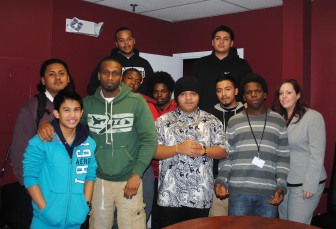
Thinkstock
More than 80% of juvenile offenders remain arrest-free after completing community-based programs, according to a recent report.
Keeping youth out of detention centers works, says a report released June 25 by Youth Advocate Programs (YAP).
More than 8 out of 10 youth remained arrest-free after completing community-based programs run by YAP, said the report, based on evaluation by the John Jay College of Criminal Justice Research and Evaluation Center. Most remained at home with the help of YAP’s intensive program.
The organization operates programs in 18 states and is one of the largest non-profits in the country that offers nonresidential, community-based programs.
Shaena Fazal, national policy director and author of the report, said the focus “is not just on community-based programs but on [those] for youth with the most complex needs.”

Youth Advocate Programs
A group of youth taking part in the Middlesex County Alternatives to Detention in New Brunswick, N.J., were interviewed for a report by Youth Advocates Program. The report detailed the effectiveness of community-base alternatives to detention.
These young people may fail in traditional diversion programs or be ineligible for them, she said, “so they are locked up.”
YAP, however, has a “no-reject policy.” meaning it does not set up any criteria for excluding certain youth. It builds its services around what an individual young person needs.
Fazal said the key elements in effective programs also include a crisis/safety plan, individualized services and giving families and the youth a voice and choice.
For example, after discussion with a 14-year-old fire-setter, YAP connected the boy with a fireman who redirected his interest toward fighting fires, Fazal said. YAP also learned the boy admired his uncle and hired the uncle to work with him.
Of the 3,523 young people examined in the John Jay study, 30 percent had a felony and 53 percent had a misdemeanor. During involvement in the program, the vast majority lived with a parent, relative, adult family friend, an adoptive family or independently.
They ranged in age from 11 to 18 and spent an average of four months in the program, although some stayed as long as 20 months.
Six to 12 months after completing the program, 90 percent were still at home as opposed to being incarcerated.
The report, “Safely Home,” pointed out the cost savings to cities and states of keeping kids out of juvenile detention centers. It urges them to redirect funds toward keeping kids in the community and to invest in community supports.
YAP operates community-based programs for youth in four counties in Alabama, a state in which reforms reduced the number of youth in state custody from 3,340 in 2006 to 1,485 in 2013. Data showed that 87 percent of the youth in YAP programs were not arrested while in the program and 80 percent were not arrested after they completed it.
The report cited a number of other diversion programs, including Community Connections for Youth, in Bronx, N.Y. Eighty percent of participants voluntarily remained in the program after their court mandate ended. In YAP Community Reintegration Services in New Brunswick, N.J., 87 percent of participants had no arrest after discharge, the report said.
Financial supporters of JJIE may be quoted or mentioned in our stories. They may also be the subjects of our stories.


Pingback: Evidence Shows Community-based Programs Work Better than Incarceration for Youth -